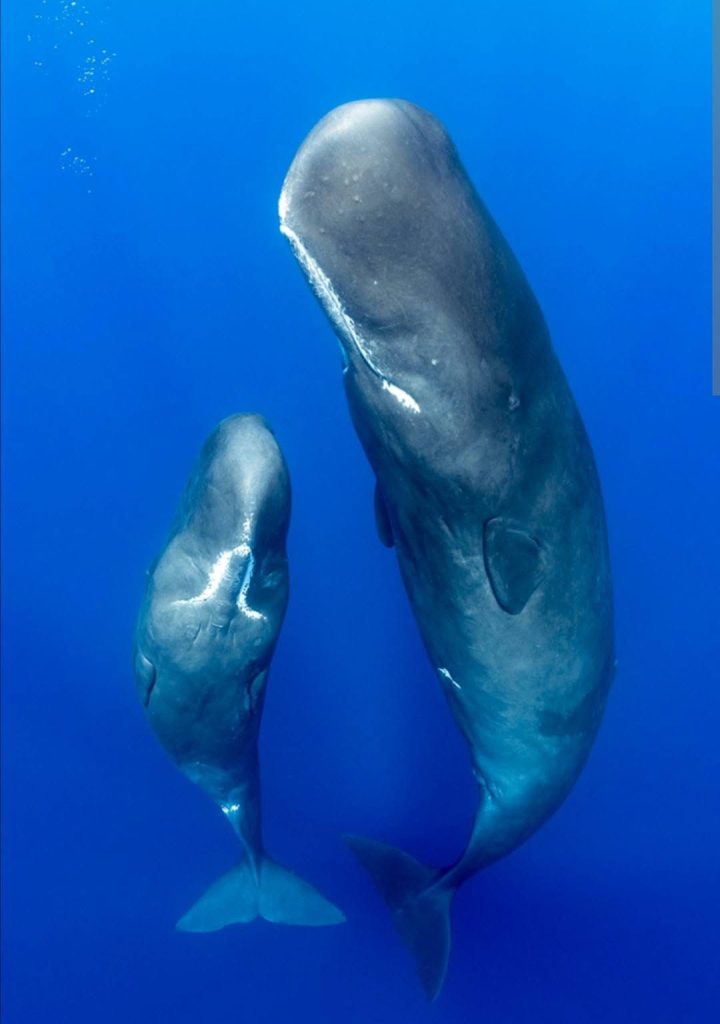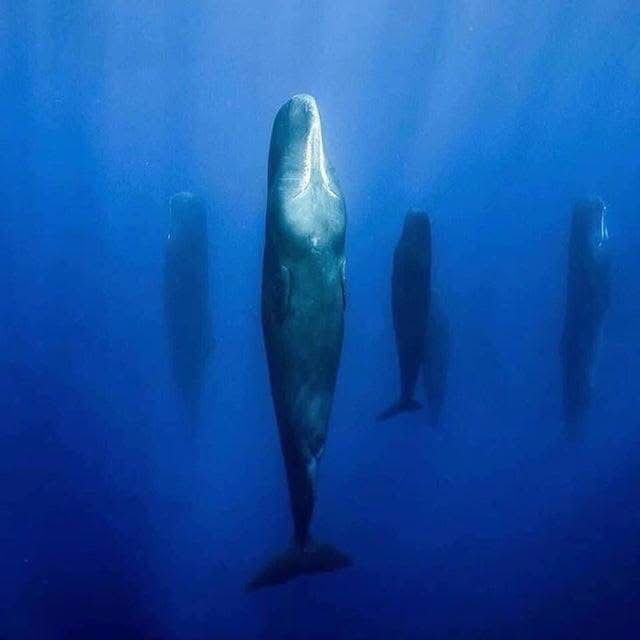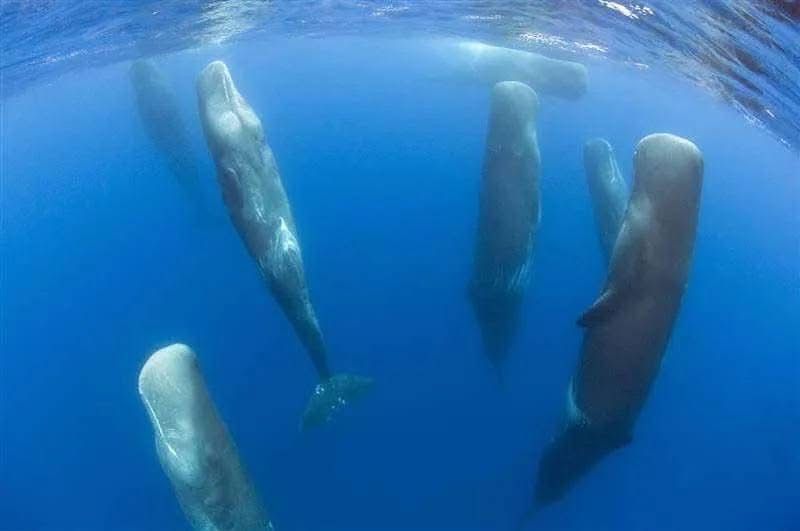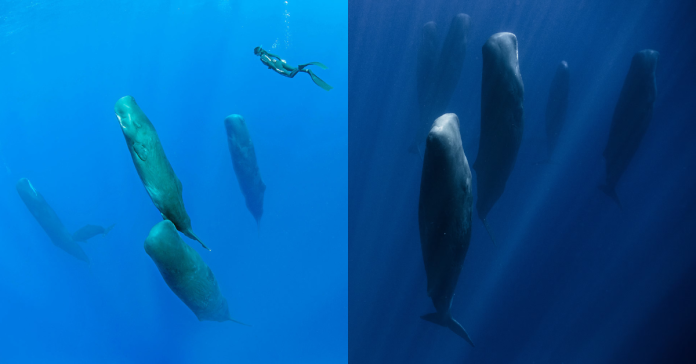In the deep blue ocean, something truly special happens, something most people never get to see. A group of sperm whales floats in total stillness, looking like tall shadows in the water. They don’t move. They don’t swim. They just hang there, standing straight up. Among them is a mother with her two young calves, a curious little boy, and his calm sister. And they are sleeping.

You Won’t Believe How These Whales Sleep
Sperm whales are the largest toothed predators in the sea. But they sleep in a very unusual way. Unlike humans, whales can’t breathe automatically while they sleep. They are involuntary breathers, which means they have to stay awake to breathe. If they fall into a deep sleep like we do, they could forget to breathe—and that could be deadly.
So, how do they survive? Nature found a smart way to help them. Sperm whales sleep with only half of their brain at a time. The other half stays awake to make sure they breathe and stay safe. This is called unihemispheric sleep. It also means they sleep with one eye open, always watching the world around them.

Whales Can’t Sleep Like Humans. Here’s Why
But what surprises scientists is how they sleep standing up. They float vertically in the water, like pillars, with their heads just below the surface. Sleeping like this helps them save energy, stay hidden from threats, and rise quickly to the top when they need air. It’s quiet, it’s calm, and it’s safe.
Back in 2008, researchers got lucky. They spotted a group of sperm whales near Chile and managed to record this behaviour. The whales were completely still, sleeping in a group near the surface. They stayed like that for about 10 to 15 minutes before slowly swimming off again. This short nap is normal for them. Sperm whales sleep only about 7% of the day, which is just over 1 hour total.

That moment showed us something magical about these animals, how they rest, how they stay safe, and how they live as a family. Baby whales, called calves, stick close to their mothers for many years. They learn everything from her, how to dive, how to hunt, and even how to sleep. The mother gently keeps her young close, offering comfort and safety in the deep ocean.
The daughter might copy her mother’s peaceful sleep pose, while the son might wake up early and swim in little circles before coming back. But no matter what, they always stay close.
Deep in the Ocean, A Quiet Moment You’ll Never Forget
This beautiful behaviour isn’t just about sleep. It’s about survival. It’s about love. And it’s about the quiet life that goes on under the waves.
Sperm whales are smart, social, and gentle giants. They live in close-knit families, care for each other, and do things that still amaze scientists today. There is still so much we don’t know about them and so much worth protecting.
So the next time you think about the ocean, imagine this: a mother, her son, and her daughter, all sleeping peacefully in a vertical line. Silent. Still. A secret moment in the deep sea that reminds us how wild and wonderful nature is.

